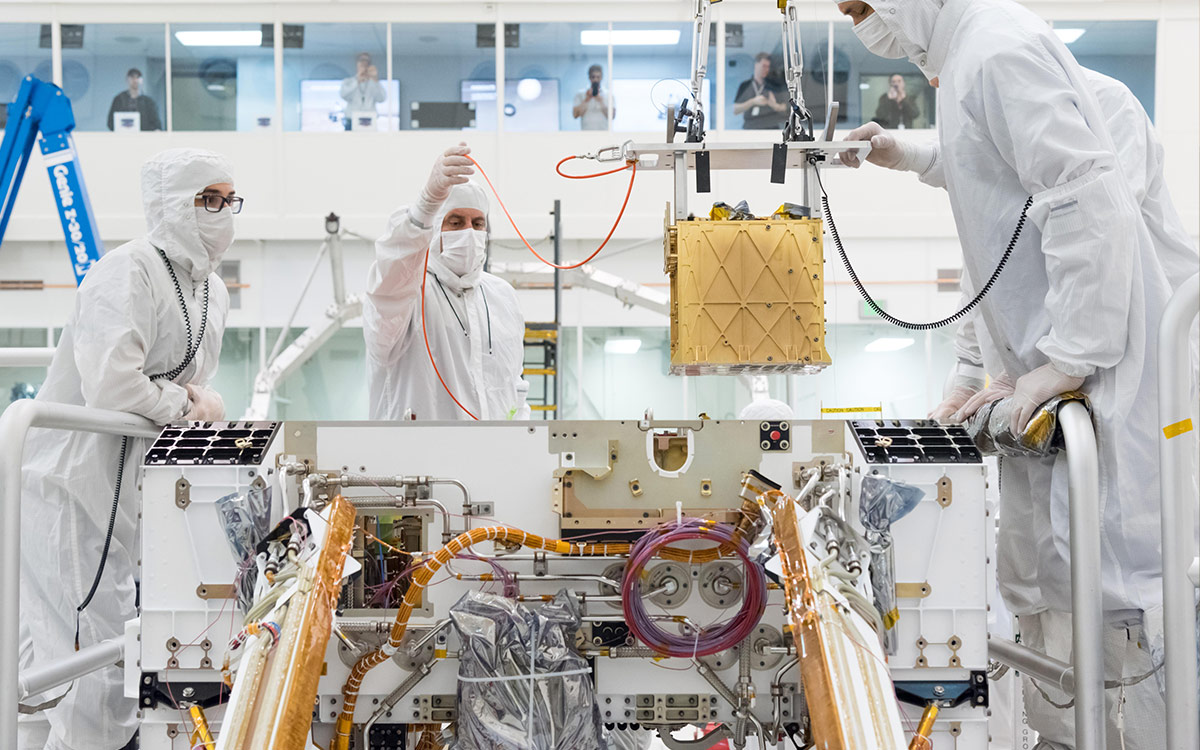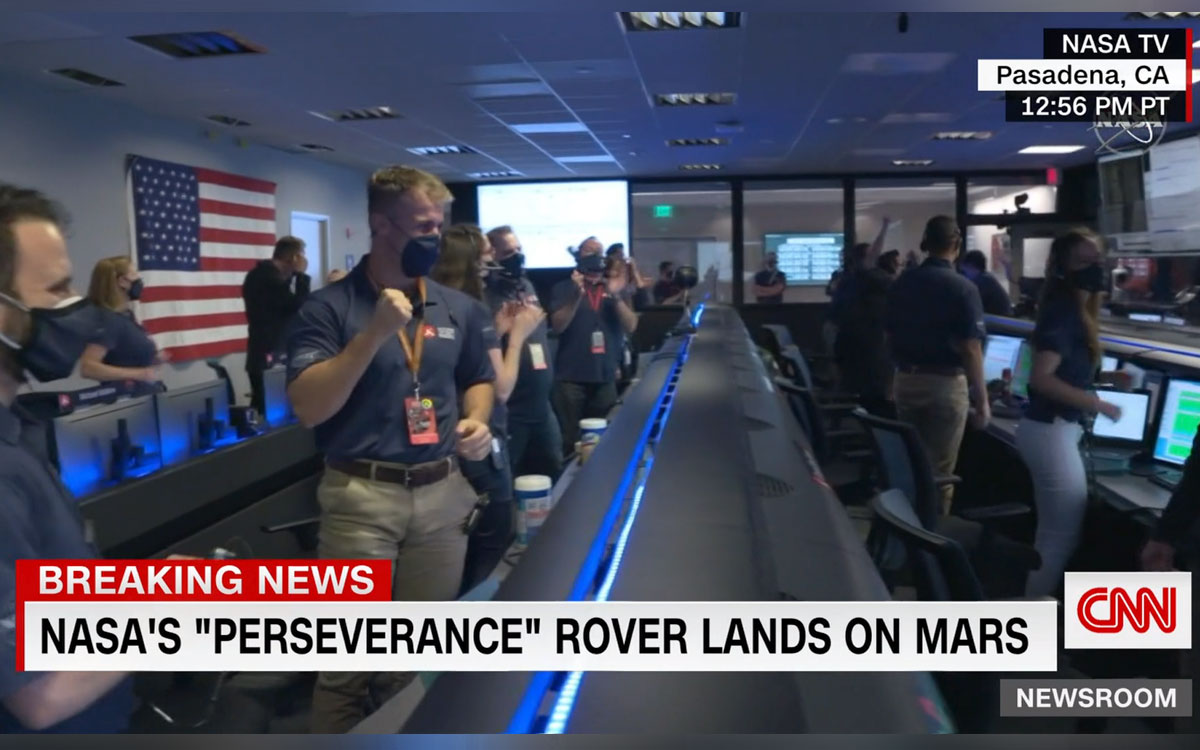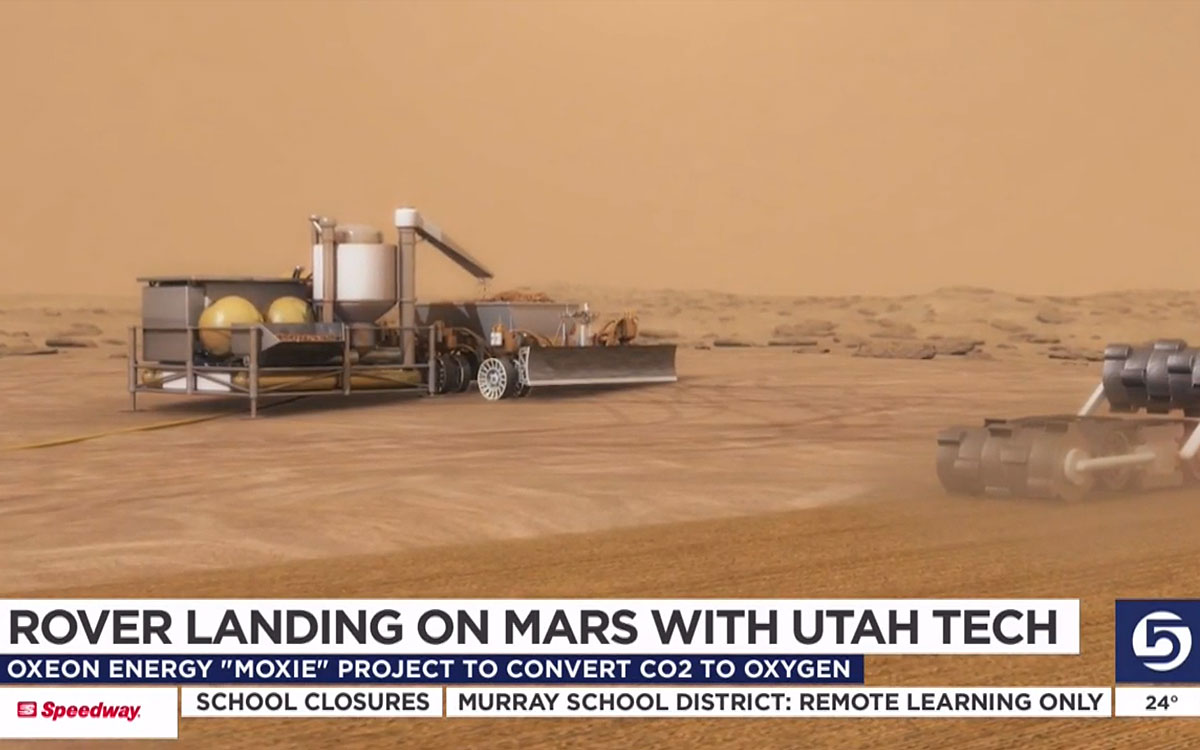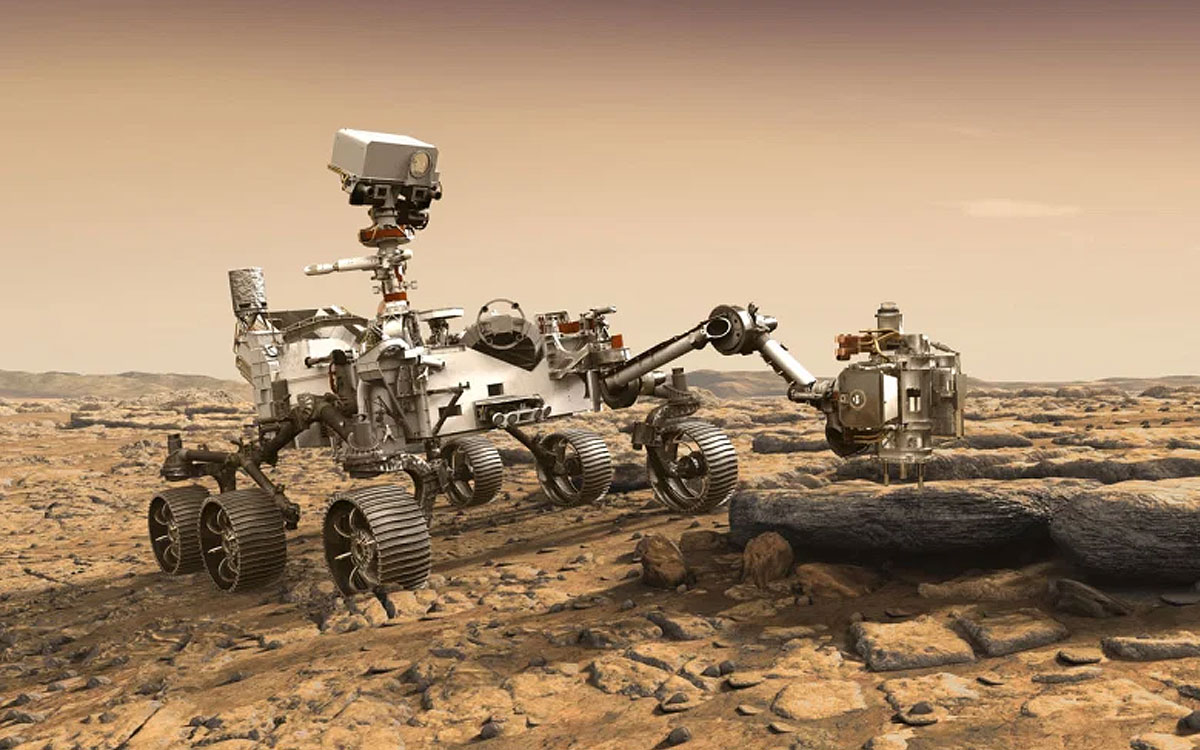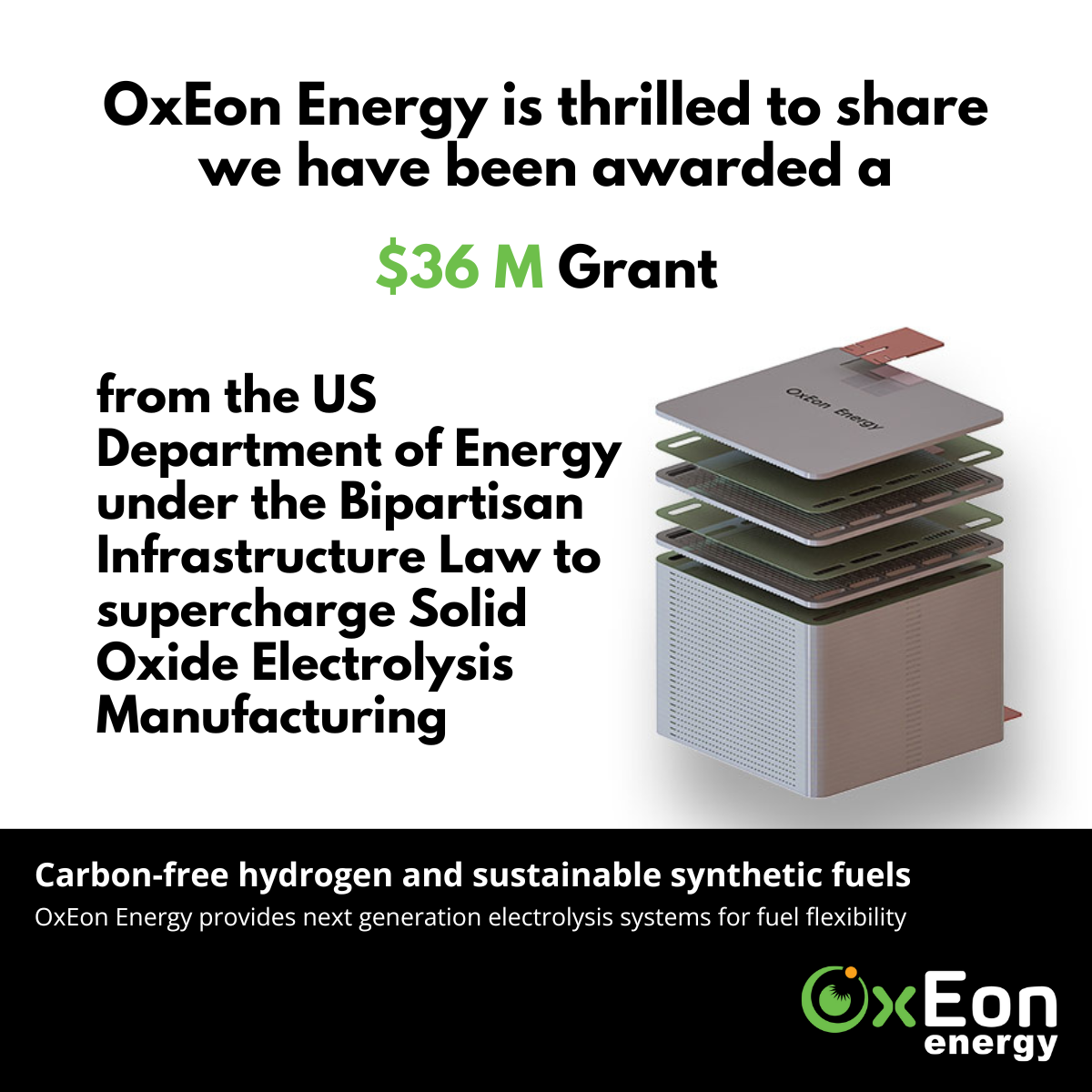MOXIE Makes Oxygen on Mars!
The MOXIE System aboard NASA’s Perseverance Rover produced Oxygen on Mars in a first of its kind demonstration using the Solid Oxide Electrolysis (SOXE) Device designed and manufactured by the OxEon team.
The MOXIE System aboard NASA’s Perseverance Rover Produced Oxygen on Mars in a First of its Kind Demonstration Using the Solid Oxide Electrolysis (SOXE) Device Designed and Manufactured by the OxEon Team.
In a first of its kind demonstration, NASA announced today that the Mars Oxygen In-Situ Resource Utilization (ISRU) Experiment (MOXIE) successfully met the objective of producing oxygen from Martian CO2 during its first operational test aboard the Perseverance Rover. MOXIE is one of seven instruments aboard Perseverance, and the first manned-mission focused system to reach the red planet.
The team at OxEon Energy, led by Joseph Hartvigsen and Elango Elangovan, designed, developed, and built the solid oxide electrolysis stack at the core of the MOXIE system. The stack development was a major part of the NASA-funded MOXIE Program awarded to Massachusetts Institute of Technology and managed by NASA’s Jet Propulsion Laboratory. This exciting effort called upon the OxEon team’s 30+ years of experience in Solid Oxide Fuel Cell/Electrolysis Technologies, propelling the bench-scale technology through flight qualification in a three-year development program. The MOXIE system successfully met its first round of objectives to demonstrate propellant and life support oxygen production required for future manned missions to Mars. OxEon’s development efforts focused heavily on providing a robust system capable of maintaining the required oxygen purity and production targets, surviving the shock, vibrational, compression and thermal environment, while meeting the rover’s power, mass, and volume constraints. The demonstration system is designed to produce up to 10 grams of oxygen per hour of operation. The system required to support a manned mission needs to be about 200 times larger.
MOXIE’s first operational run on the surface of Mars yielded the targeted oxygen output of 5.4 grams. This test of the MOXIE system was declared an “unmitigated and picture perfect” success.
MOXIE is expected to operate periodically throughout the Perseverance Mission to continue characterizing performance and define system requirements to support human exploration in future mission. OxEon has active NASA development projects for full mission-scale designs. This technology is also being applied on Earth to produce sustainable transportation fuels from bio-CO2 sources and renewable energy.
Photo: Technicians in the clean room are carefully lowering the Mars Oxygen In-Situ Resource Utilization Experiment (MOXIE) instrument into the belly of the Perseverance rover. Credit: NASA/JPL-Caltech

